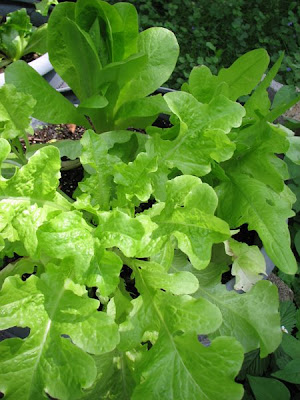When the well is dry, we know the worth of water.
~ Benjamin Franklin
When you drink the water, remember the spring.
~ Chinese ProverbAs the Earth's population grows and more nations adopt a Western lifestyle, there will be a greater demand for resources. A lot of people are concentrating on the scarcity of non-renewable resources, such as fossil fuels. But many parts of the world are experiencing a scarcity of clean, fresh drinking water, and this scarcity grows and spreads each year. [See
Global Water Shortage Looms In New Century] Shortages of water can lead to tensions between neighbors, and as the University of Arizona's Arizona Water Resource article points out,
It should come as no surprise to learn that the words "river" and "rival" share the same Latin root; a rival is "someone who shares the same stream." Preserving and conserving water is not only better for the environment, but also for maintaining peace.
POLLUTIONOne way to protect our watersheds is to reduce and eliminate water pollution. As gardeners, it is important that we consider how our growing practices impact groundwater supplies, and nearby streams, creeks, rivers, and bays. By practicing organic gardening methods, you commit to not using harmful pesticides, insecticides, herbicides, fungicides and fertilizers on your lawns, gardens and plants that could poison fish and cause algae blooms. An organic gardener is also committed to preventing soil erosion, preventing soils and fertilizers from being washed away in runoff that pollutions are waterways. By not polluting water supplies, we increase the amount of clean drinking water available for our communities.
You can also ease pressure on storm drains and the waterways they dump into by creating a
rain garden to absorb runoff from your driveway or yard. The Low Impact Development Center is a ttremendous resource for
Rain Garden Design Templates and information.
CONSERVATIONAnother way to protect our watersheds, is to reduce the amount of water we use and waste. Gardeners use a lot of water in the day-to-day care of their plants. While it may be easy just to turn the faucet on and let the water flow, it is not the most environmentally friendly or cost-effective way to water your plants. It is possible to reduce the amount of water needed in your garden by implementing some simple but wise measures.
1) Try "recycling" water for a second use in the garden:
-water left over in the salad spinner
-water left over from boiling potatoes or pasta, or steaming vegetables
-water left in the tea kettle or coffee pot, or leftover tea or coffee for that matter for acid-loving plants (no creams or sugar though)
-water removed from a fresh water aquariums
-water from a hot water bottle
-water leftover in drink glasses or water bottles
-water saved from waiting for it to heat up in the shower or when washing dishes
-
greywater (water from dish washing, bathing or laundry), although special consideration of residues, soaps and cleaning agents is needed
2) Take advantage of rainy days by catching rain from rooftops in a rain barrel or in 5-gallon buckets placed under gutter spouts.
Rain barrels often come equipped with a hose or spicket to make watering from them easier. They also have screens to keep debris and mosquitos out.
3) Amending the garden soil with compost and/or coir (or peat moss) can help retain soil moisture.
4) Mulching with straw, compost, dried leafs, beauty bark, sheets of b&w newspaper, etc. can help soil retain moisture, plus give the extra benefit of keeping down weeds.
5) Drip tape irrigation keeps water close to ground level and reduces water loss caused by evaporation.
6) Watering in the early morning before the heat of the day can reduce water loss by giving plant roots time to drink up the water before the sun's rays cause it to evaporate.
7) Incorporate
native plants into your garden. Native plants are adapted to the growing conditions (climate and soil) of your region, and have higher drought resistance.
 8)
8) If you grow plants in containers, line terracotta pots with plastic grocery bags before you fill them with potting soil. Make sure you put a hole in the bottom of the bag for drainage. You can also place small stones or mulch in the top of the container. Both of these methods will help reduce water loss caused by evaporation.
SHARINGRemember the creatures that share the garden with you. Keep a small pond, bird bath or fountain in the shade for birds and beneficial insects to have access to water.








